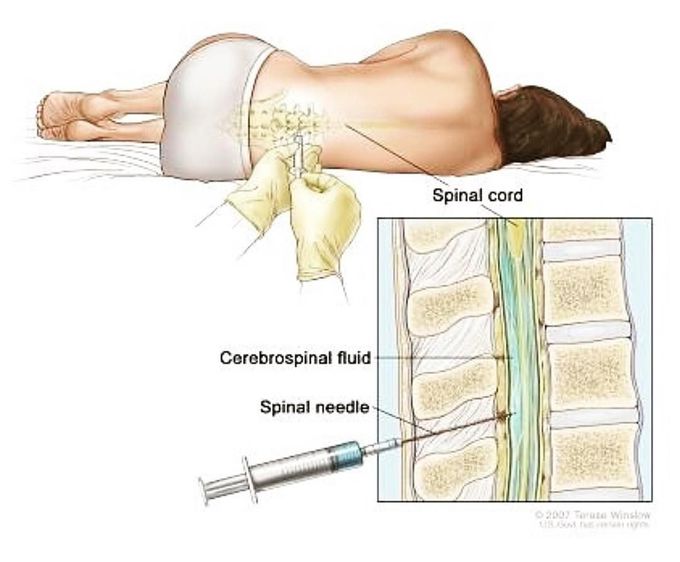


Lumbar Puncture
Withdrawal of cerebrospinal fluid (CSF) from lumbar cistern, it is an important diagnostic tool for evaluating of a variety of CNS disorders including bacterial, fungal, mycobacterial, and viral CNS infections, subarachnoid hemorrhage, CNS malignancies, demyelinating diseases, and Guillain-Barré syndrome. The procedure is performed with patient lying on side with back and hips flexed, flexion of vertebral column facilitates needle insertion by spreading apart vertebral laminae and spinous processes in adult, needle can be safely inserted in midline between spinous processes L3/L4 or L4/L5. Recall the spinal cord extends to L1/L2 in adults and L3 in neonates. Needle "pops" through ligamentum flavum, punctures dura and arachnoid, and enters lumbar cistern. Order of structures penetrated is first skin/superficial fascia, ligaments, supraspinous, interspinous, ligamentum flavum, epidural space, dura mater, subdural space, arachnoid mater, subarachonoid space - where CSF is contained, Note: pia is NOT pierced (Recall pia lies directly on the nerve bundles of the actual spinal cord). CSF from the Lumbar Puncture is analyzed for color, cell type, morphology, and count protein and glucose level.

